
According to Bloomberg NEF’s 2020 Climatescope findings, for the first time, renewables accounted for the majority of new capacity added (127 GW) in emerging markets (excluding mainland China and India). Indeed, many emerging countries are now embracing renewables for their environmental benefits but also their decentralized model, better suited to their situation.
Despite all the progress made, there are still 770 million people who do not have access to electricity, mostly in emerging countries. The rise of renewable energy in these countries has been made possible thanks to global financial support. Funding in these regions reached $21.3 billion in 2017, nearly double the 2010 level, according to the UN. It also coincides with a decline in the price of renewables. Some would even argue that it is now cheaper to invest in solar than coal in many jurisdictions (no climate risk, stable price, growing demand). In addition, emerging countries have a high natural potential for renewables. Ethiopia, for instance, is starting to tap into its strong hydropower capacity and has added 254 MW in 2019. With a total of 4,000 MW, it is the leading African country in terms of installed hydropower capacity today. In Kenya, the solar potential is rather high given its insolation rates, with an average of 5-7 peak sunshine hours and average daily insolation of 4-6 kWh/m2.
Therefore, in emerging countries where the infrastructure network is not yet mature and has a low coverage rate, distributed renewable energy systems are often a good alternative to connecting to a centralized grid or to relying on fossil fuels for electricity. These systems are either connected to community-level or micro-grid systems or are isolated household-level devices and systems for heating, cooking, and productive uses. The advantages of more distributed models include applicability to small and remote areas, reduced transmission and distribution losses, the allowance for direct and local private investment, local employment, and in some cases, improvements in reliability, speed of deployment, and local spill-over costs. Of the 26 million households relying on such renewable decentralized systems, there are primarily 20 million relying on Solar Home Systems (small-scale solar PV), 5 million households through renewable mini-grids; often powered by hydro energy, and the remainder through small-scale wind turbines and biomass digesters.
Thus, in emerging countries, decentralized renewable energy infrastructure is installed in place of the centralized electricity network in developed countries, as they do not have the same requirements in terms of maintenance and expected return on investment. The business models have also been adapted to the countries’ economic situation. Payment methods, for instance, are adapted to the low bank penetration rate and small payment amounts. In many countries, it is possible to pay with mobile credits or to pay-as-you-go (PAYG). Under PAYG schemes, customers typically pay a small initial fee for a solar charger kit, a portable system, and a control unit, and then pay for the energy they need, either in advance or on a regular basis according to their consumption. This payment method has spread at an average annual growth rate of 140% since 2013 – East Africa has accounted for most of this growth, thanks to a strong mobile money ecosystem. Startup BBOOX, for example,installs solar panels in households that can power up to five lights, a television, radio, torch, or a 12V battery, paid with PAYG mobile money. This is also what the subsidiary of ENGIE Fenix International offers. It provides access to energy via PAYG solar home systems to more than 500,000 customers in Africa. Additionally, with ENGIE PowerCorner, ENGIE supplies electricity to rural populations in villages across Tanzania and Zambia through smart mini-grids powered by solar energy and battery storage, used by households, local businesses, and public services. All these services are enabled by digital financial solutions such as mobile money and PAYG technologies. Finally, startup Offgridbox has developed and installed modular, compact units that provide renewable energy from solar panels on the roof and purified water in off-grid areas. 400 households can come and pay-as-they-go for drinking water and electricity.
The deployment of renewable energy in emerging countries has also benefitted from government and international organization support. It is clear that these countries do not have a sufficient national electricity network, thus governments, through regulation and financial support, participate. For instance, Kenya, Rwanda, and Tanzania all removed the VAT on solar products in 2014–2015. Another great example is the UN-supported international program Daunekhola micro-hydro system in Nepal. This micro-hydro system provides electricity and generates additional revenues for 116 households, and increases agricultural productivity thanks to the water flowing out from the system.
However, these new distributed renewable electricity models still face major challenges, which include high financing costs, lack of access to finance and long-term capital, and insufficient technical know-how for the operation and maintenance of renewable energy technologies. The Covid crisis also put a stop to this deployment, as fossil fuels and traditional industries received the majority of sovereign pandemic support. Moreover, to be sustainable in the long-term, there is still a lack of end-of-life management of these energy devices. A secondary market for small-scale renewable systems – such as PV panels – could benefit both producers and households.
To conclude, the diffusion of renewable energy in emerging countries is highly localized. Although its adoption is still scattered and dependent on regional incomes, it is best suited to local needs and does not rely on a costly and sclerotic infrastructure network. This market is surging and all actors, from local startups to Western corporations, are addressing it.
2 Key Figures
618 renewable energy in emerging countries startups
– excluding China – registered by Tracxn
Renewable energy market expected to reach $1,512 Bn by 2025
The renewable energy market was estimated at $928 Bn in 2017 and is expected to reach $1,512 Bn by 2025, at a CAGR of 6.1%
3 startups to draw inspiration from
This week, we identified three startups that we can draw inspiration from: Kingo, SunCulture, and Sistema.

Kingo
Kingo is a Guatemalan start-up. It provides pre-paid solar power based solutions to rural communities without access to an electricity grid. The users of their prepaid product can connect 3 light bulbs and 1 cell phone to the system at any one time. Additionally their technology is designed and manufactured to withstand rural living conditions where dust, heat, insects, rodents and moisture are all factors in need of consideration.

SunCulture
SunCulture is a Kenyan start-up that develops and offers solar-powered irrigation systems. It combines solar-powered water pumping with low-pressure drip irrigation systems. The system delivers water directly to crop roots. They also offer a Pay-As-You-Grow option that allows you to pay in small monthly installments.
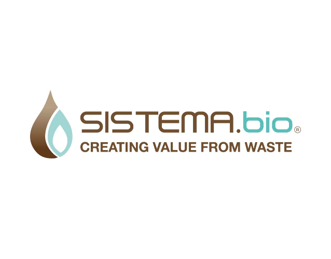
Sistema Bio
Sistema is a Kenyan start-up that provides biodigester to produce biogas from organic waste. The biogas can be used for residential and farming activities. They are operating in India, Kenya, Colombia, Mexico, and Nicaragua. They also offer pay-as-you-go payments.
123Fab #24
1 topic, 2 key figures, 3 startups to draw inspiration from
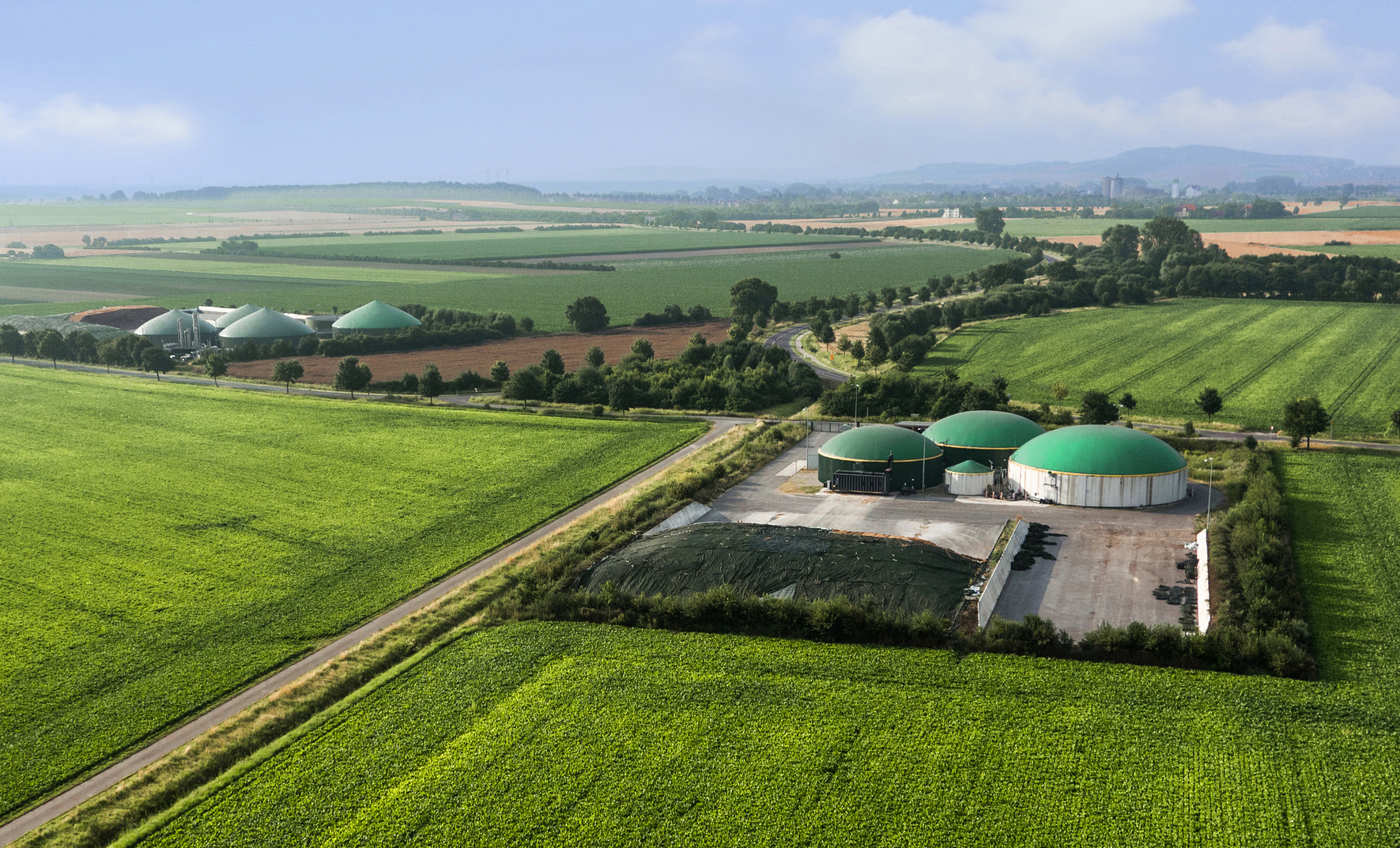
Over the years, the French government has boosted the financial incentives offered to the biomethane industry to reduce the costs associated with the production and operation of units. Whereas the exemption from the domestic consumption tax on natural gas (TICGN) previously applied to biomethane, the French government has just announced that it will no longer apply from January 2021. France Biométhane, a green gas think-tank, deplores this decision which, according to them, discredits biomethane and favors fossil fuels.
Biomethane, defined as a renewable natural gas with properties close to those of natural gas, may well play a major role in building a sustainable energy future according to the International Energy Agency (IEA). Indeed, there is no need to change the transmission and distribution infrastructures or end-user equipment. Consequently, it can be injected into the natural gas distribution network very easily or used as fuel for vehicles (bio-CNG, bio-LNG). It is also comparable to renewable energy since it emits 10 times less carbon than natural gas, can be stored and offers a solution to the intermittent use of solar and wind energy. Finally, it reduces the pressure on landfills and fits into the circular economy. Therefore, there are reasons to believe that biomethane could become more firmly established in the future. How about its economic viability and technical feasibility?
To date biomethane can be produced in 3 ways:
- The biogas road – which uses wet biowaste. It uses the means of anaerobic digestion to convert the biowaste into biogas. The biogas is then purified to remove the CO2 and other contaminants to produce biomethane.
- The syngas road – which uses dry or semi-dry biowaste. It uses the means of pyro-gasification to convert the biowaste into syngas. The syngas is then cleaned and methanised to convert the hydrogen, carbon monoxide and dioxide into methane.
- The hydrogen road – which uses electricity. It uses the means of electrolysis (or power-to-gas) to convert electricity into hydrogen. The hydrogen is then cleaned and methanised to convert it into methane.
In short, there are three main methods for producing biomethane: anaerobic digestion, pyro-gasification and electrolysis. To date, approximately 90% of the biomethane produced comes from anaerobic digestion and the upgrading of biogas. Among the purifying and upgrading technologies, we can find water scrubbing, adsorption, cryogenic separation, membrane technology, etc.
Waga Energy, a landfill gas-to-energy technology firm, is one of the large players in this segment. In 2018 they notably joined forces with environmental services giant Veolia. Since then, Veolia has been using Waga Energy’s Wagabox® technology to produce biomethane using biogas, which is injected directly into the natural gas grid operated by GRDF. In early October, the two players signed a contract to install a purification unit at the waste storage center in Claye-Souilly. This facility, which should be commissioned by February 2022, will produce biomethane from waste and supply 20,000 households in the Paris region with renewable gas.
Last year, France set an objective of injecting 10% of biomethane (21 TWH) into the country’s gas network by 2030, like Denmark is already doing. Numerous biomethane injection sites have seen the light of the day. To date, 133 biomethane injection sites are producing 2.3 TWH per year. With an average annual growth rate of more than 60% over the last 3-4 years, the French goal seems feasible.
However, production costs remain high when taking into account the cost of input supply, the cost of transformation (into biogas/syngas and then into biomethane), and the cost of injection (connection to the energy grid). The price to produce biomethane reaches €95 compared to €20 for natural gas. This is why the development of biomethane will ultimately depend on the policy framework and if the market conditions remain attractive for the project leaders (green gas feed-in tariffs, stability, or reduction of construction and gas connection costs).
Overall, the optimal uses of biomethane are in the end-sectors where there are fewer low-carbon alternatives (high-temperature heating, petrochemical feedstocks, heavy-duty transport, shipping, etc.). There are also other motivations such as rural development (household digesters), energy security (complementing wind and solar PV or substituting imported natural gas) and urban air quality.
2 Key Figures
330 Biomethane startups
registered by Crunchbase
Market size expected to reach $3.4bn by 2027
The global biomethane market accounted for $1.8 billion in 2019 and is expected to reach $3.4 billion by 2027 growing at a CAGR of 8.3% during the forecast period.
3 startups to draw inspiration from
This week, we identified three startups that we can draw inspiration from: CPD-Swiss, Nexus Fuels, and Pyrowave.
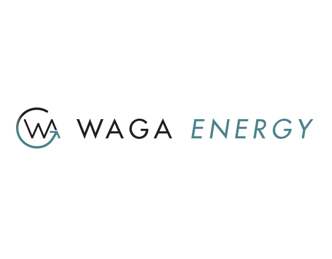
Waga Energy
Waga Energy develops, designs, invests and operates WAGABOX® units that recover biogas from landfill sites to transform it into biomethane. Waga Energy uses two upgrading processes: membrane filtration and cryogenic distillation.

Enosis
Enosis develops a biomethanation reactor that converts biogas, syngas and CO2 into methane and provides flexibility services to the electrical grid.
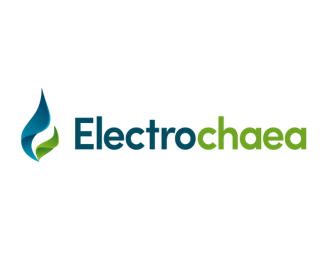
Electrochaea
Electrochaea’s proprietary power-to-gas (P2G) process converts renewable energy and carbon dioxide into grid-quality renewable methane for storage and distribution.
123Fab #41
1 topic, 2 key figures, 3 startups to draw inspiration from

In 2020, in addition to $650 million in private investment in Africa’s mini-grid sector, the African Development Bank announced a $7 million grant to help this African industry. Mini-grids can be defined as sets of electricity generators (10 kW to 10MW) – and possibly energy storage systems – interconnected to a distribution network that supplies electricity to a localized group of customers.
Different technologies can power mini-grids. The most common types are solar mini-grids, hydro mini-grids, and hybrid mini-grids that couple renewable energy with non-renewable sources, such as solar-diesel or solar-biomass systems. Mini-grids can be connected to the national electricity network, but they can also operate autonomously without being connected to a centralized grid. In the first case, the mini-grid is designed to interconnect with the central grid, which means that it operates under normal conditions, disconnecting only in case of a central grid failure or demand peak. In the other case, the mini-grid is designed to operate autonomously in a remote location with the option to connect to a central grid when grid extension occurs. Thus, mini-grids address a wide range of uses, from access to energy in remote and off-grid areas in emerging countries to electricity generation in eco-districts in more developed regions. The three main use cases are the following:
- Remote areas where households lack access to electricity (40%): The State of the global mini-grid market Report of 2020 estimated that 238 million households could be connected to mini-grids in Sub-Saharan Africa, Asia and island nations by 2030. As a result, large corporations and startups are addressing this surging market. In Africa, ENGIE inaugurated its first PowerCorner mini-grid in Zambia in April 2019 and aims to develop 2,000 mini-grids by 2025. In Asia, India’s Tata Power has a similar project in its home country. Startups are also addressing this market. A great example is Nuru, a mini-grid owner and operator using solar-hybrid systems in DRC, in a country where the national electrification rate is only 7%.
- Remote commercial and industrial sites (16%): For off-grid and hybrid power plants, where connection to the national grid is more expensive, hybrid mini-grids can be installed. This is what eLUM does, providing solar-diesel solutions to factories and power plants, such as for a food processing factory in Ghana.
- Eco-district and city for better energy efficiency (10%): The city of Feldheim, Germany, owns and operates a local renewable mini-grid system consisting of solar, wind, and biomass power generation sources, as well as a battery storage system. It has managed to reduce the cost of electricity for residents by 30%.
Mini-grids are a strong trend, that should be embraced rather than questioned. Indeed, up to one-third of the losses associated with distributed energy resources could be recovered if utilities tapped into the mini-grid opportunity. The integration and development of mini-grids are made possible by several technology innovations:
- Plug-and-play energy management systems using artificial intelligence: Thanks to the developments in optimization model software, connection to the main grid can be efficiently done and AI can be used to forecast demand and energy generation from renewable sources, to accurately match supply with demand. For instance, research institutes CSIRO (Australia) and NREL (USA) are working together to simplify the integration of renewable mini-grid systems by creating a plug-and-play controller that can maximize the use of solar energy.
- Low-cost battery storage technology: Battery storage systems are crucial in balancing the variability of PV and wind and in shifting the electricity generated at times when supply exceeds demand, to times when demand exceeds supply. While historically renewable mini-grid systems have used lead-acid batteries due to their lower cost, technological advances and large-scale manufacturing of lithium-ion batteries now make them a competitive solution.
- Advanced metering infrastructure: Smart meters can enable remote monitoring of consumption and support the implementation of various pricing schemes, such as time-of-use tariffs. In the case of off-grid systems, renewable mini-grid operators can implement prepaid or pay-as-you-go models using mobile payment systems and smart meters – to remotely switch on and off customers’ electricity supply.
All of these innovations have not only enabled mini-grids to become a relevant source of electricity supply, but they have also helped generate undeniable economic, ecological, and social impacts. First, mini-grids are often the only economically viable option for electrifying rural communities. Hybrid mini-grids also increase the reliability of the electricity supply. When it comes to their carbon emissions, they are limited as they often incorporate 75%-99% renewable supply. Finally, the implementation of mini-grids has proven to have a positive social impact by fostering and improving the local governance structure through community involvement.
Despite these benefits and market attractiveness, mini-grid penetration remains low in most developing countries due to technical difficulties and economic challenges. The main technical issue is lack of maintenance or use of poor-quality technology, which could be due to a lack of sufficient funding or a shortage of local skills for maintenance. Then, the major economic challenges are the need for regulations to protect mini-grid asset cash flows (e.g., protecting isolated mini-grids if the main grid arrives), and the need to solve customers’ ability to pay, as their irregular income streams pose significant risks to revenue collection.
To conclude, mini-grids have a strong future with short-term uncertainties. While the mini-grid market is estimated to grow at least at a double-digit rate over the next six years, the growth is limited by technical and financial issues. New component technologies (e.g., batteries) and new integration models appear to be the main drivers to solve these issues today (e.g., AI, smart meters).
2 Key Figures
389 mini-grid startups
registered by Tracxn
The mini-grid market expected to reach $30 Bn by 2025
The global mini-grid market was estimated at $11.4 Bn in 2019 and is expected to reach $30 Bn by 2025, at a CAGR of 14.75%.
3 startups to draw inspiration from
This week, we identified three startups that we can draw inspiration from: SolarKiosk, Kemiwatt, and SOLshare.

SolarKiosk
SolarKiosk is a German start-up that provides clean and sustainable energy services intended to help resource-scarce and off-grid areas gain easy access to electricity through energy hubs. The company designs, manufactures, implements and operates solar mini-grids which can be deployed in the most remote areas.

KemiWatt
Kemiwatt is a French start-up that develops innovative redox flow battery technology for stationary energy storage. A typical application is the storage of renewable energy (solar, wind), either off-grid for micro grid, or mini-grid services (load-shifting, peak-shaving,…).

SOLshare
SOLshare is a Bangladi stat-up that is the developer of an electricity trading platform designed to manage local electricity for households and small businesses in densely populated off-grid villages. The company’s peer-to-peer platform enables users to monetize excess solar energy, and create a network by sharing electricity.
To receive the latest Aster Fab insights directly in your inbox, you can subscribe here.
123Fab #36
1 topic, 2 key figures, 3 startups to draw inspiration from

On the one hand, heating and cooling applications are among the largest energy consumers (about half of the total energy consumption). On the other hand, some of the renewable electricity produced is lost due to non-immediate use, and this will continue to accelerate as renewable energy facilities are being developed faster than batteries and storage solutions. The reconciliation of these two issues, converting electrical energy into heat (or cold), is called Power-to-Heat (PtH). Thermal energy is produced by heat pump technologies or electric boilers. In the context of growing environmental awareness, industrials are increasingly looking for technologies that will enable them to shift from fossil-based industrial heating to electrically-based, power-to-heat processes. These industrial heating applications account for almost 20% of global energy consumption.
These renewable power-to-heat technologies help industries to reduce their CO2 emissions and offer higher flexibility in the power system when equipped with smart load management. Industrial application technologies are already mature and commercially available. However, they have yet to be integrated into hybrid heating systems (e.g. with natural gas).
How does it work? The first step is the delivery of electricity from renewable sources to power stations (which may be large centralized heating production stations or decentralized entities). Infrastructures can be equipped with thermal storage systems, such as those of Form Energy, to enable consumers to use the stored heat and thus reduce the demand on the power grid during peak electricity demand periods. Afterwards, there are two technologies to convert electric power into heat: electric boilers and heat pumps. Electric boilers use electricity to heat water, which is then circulated through pipes to provide space heating or stored in hot water tanks for later use. Heat pumps, on the other hand, transfer heat from the surrounding heat sources to buildings and infrastructures. They can fulfill both heating and cooling requirements — typically using between 66% and 80% of the energy contained in the ambient air, water, or ground, and between 20% and 33% electricity to drive the process.
Where is it used? These technologies are applied in different industries, for several uses. The first example is the food & beverage industry, where heat plants are used in Japan for brewing sake and beer. The Suntory production plants, for instance, use a cogeneration system (combined heat and power) that recovers the heat generated from in-house generation and uses it as a heat source for brewing beer and extracting coffee and tea, increasing energy efficiency to 70-80% and reducing CO2 emissions by 20-30%. Another example is the container washing plant in Spain that uses solar thermal heat. 22% of their hot water (80°C) demand is covered by a solar thermal system based on flat plate collectors, and the remainder is covered by a conventional boiler using natural gas. District heating is also a common application of power-to-heat. In Hamburg, Vattenfall operates an electric boiler that uses excess wind generation, thus avoiding wind power curtailment, to generate district heat in Berlin. The units use electricity from renewable energy sources to heat water, which transmit heat to residences and commercial buildings.
More generally, power-to-heat innovations contribute to the transformation of the power sector in 5 ways:
- Reduction of renewable energy curtailment: the excess of energy is used to address heating needs.
- Increased flexibility through load-shifting: heat pumps can offer demand-side flexibility by switching their electricity consumption from high-demand time intervals to low-demand time intervals to convert electric power into stored heat or cold.
- Large-scale energy storage: the surplus heat (resp. cold) produced with renewable energy in summer (resp. winter) can be stored in thermal reservoirs (mainly aquifers), which then can be used to meet the winter (resp. summer) heating demand, thereby reducing the need for non-renewable heat sources during peak times. The most common solution is the use of Phase-Change Materials (PCM), which are efficient against energy loss and leakage and are substances that release or absorb enough energy to maintain a regulated temperature. A great example of such a process is the Canadian project Drake Landing, which uses solar thermal energy and seasonal underground thermal energy storage for a district heating scheme. It supplies a residential community of 52 households that have seen their greenhouse gas emissions cut down by more than 5.5 times per year.
- Grid services provided by aggregators: new “smart” storage heating solutions are designed to take advantage of variations in electricity prices throughout the day and can be remotely controlled by aggregators to both optimize heating costs for consumers and provide grid balancing services to the national grid.
- Increased self-consumption through renewable local generation: consumers with solar rooftop systems can use the locally generated electricity to power heat pumps.
Ultimately, having understood how power-to-heat systems work and what their benefits are, it can be useful to bear in mind the drivers behind their adoption and the regulations that are put in place. Incentives to decarbonize the heating sector are leading to the deployment of heat pumps at a steady pace. On average, the operating costs of using electricity to generate heat are comparable to those of using fossil fuel-based sources. High-performance heat pumps can generate more than 4–5 kWh of useful heat for every 1 kWh of electricity consumed. Furthermore, regulations are being implemented in pioneer countries, like in Germany, where the Renewable Energy Heating Act bans the use of oil burners to heat new buildings and requires all new buildings to use energy generated from renewable energy sources for space and water heating. Similarly, in 2017, Norway’s Ministry of Climate and Environment passed a law banning the use of oils and paraffin from 2020 in heating applications.
To conclude, now that power-to-heat technologies are mature and up-and-running, more incentives should be brought forwards to increase the use of renewable energy in heating and cooling. Domestic and industrial consumers will need to make upfront investments to shift to renewable energy for heating and cooling applications, and schemes that reduce the economic burden on consumers will encourage faster adoption of renewable energy in heating and cooling. However, these schemes need to be tailored to the needs of different consumer segments, types of buildings (residential vs. industrial), and types of heating system (centralized vs. decentralized), as well as to other external factors, such as the climate zone.
2 Key Figures
177 power-to-heat startups
registered by PitchBook, including 100 “thermal energy storage” startups
Market size expected to reach $369M by 2025
The market size of thermal energy storage is expected to reach $369M by 2025, at a CAGR of over 14.4% from 2020.
3 startups to draw inspiration from
This week, we identified three startups that we can draw inspiration from: Malta Inc, Enerstorage, and Heaten

Malta Inc
The US-based startup Malta Inc builds an electro-thermal energy storage system that converts electricity to thermal energy for storage. It later converts the thermal energy back into electrical energy whenever required
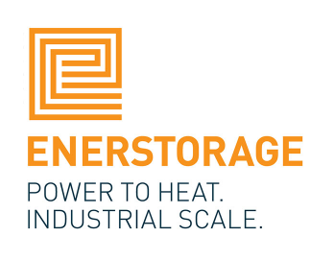
Enerstorage
The German startup Enerstorage sells power-to-heat plants for industries that require a lot of heat. The PtH systems provide an important link between the heat supply and the power grid, regulate the power grids, and thus lead to a successful energy transition.

Heaten
Heaten is an industrial startup that provides heat-to-power and power-to-heat machines. Their very high-temperature heat pumps are based on an innovative piston machine technology, which provides an output temperature up to 165°C, which covers 30% of the energy demand of all industrial heating processes.

Context
As part of its transformation efforts, our client had developed a series of digital initiatives to deliver added value to its clients. In particular, it had tested digital twin solutions with a few clients, but had not defined the commercial model for these services.
In this context, our client wanted to undertake a reflection around the ways to integrate digital services into its offering and define a pricing model.
Mission
We organized a workshop to:
- Align the participants on the importance of monetizing and capturing the value of the services provided to its clients
- Provide a thorough and prospective view on market trends in digital twin business models to identify potential options
- Illustrated the case with business models of digital solution startups in the industry
- Frame a thinking canvas to help the client identify new business models to test with its clients
Key figures
10+ people
We helped our client to acculturate 20 team members to Digital Twin services.
1st offer
We helped our client to launch its first Digital Twin offer in Q4 2020.
123Fab #32
1 topic, 2 key figures, 3 startups to draw inspiration from
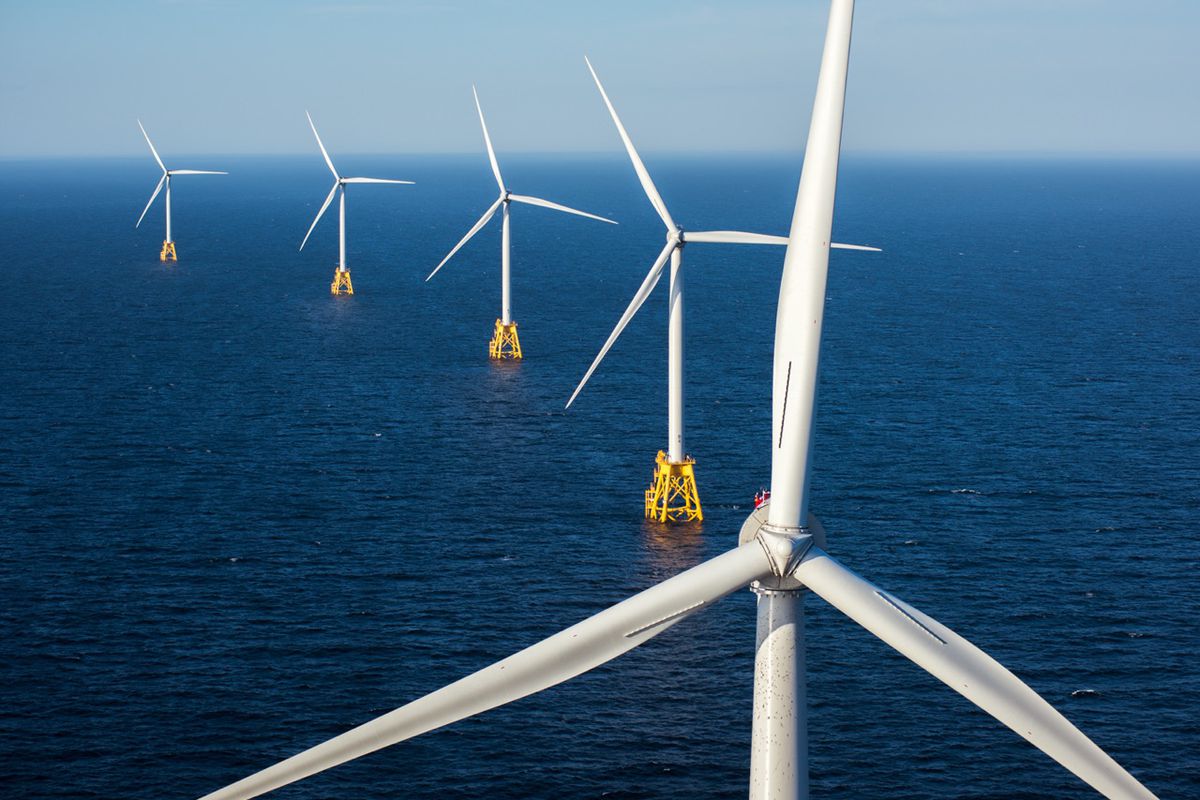
While offshore wind stagnated under Trump, President-elect Joe Biden’s policies could create a clean energy surge. Indeed, Joe Biden’s climate plan proposes building thousands of offshore wind turbines to put the US on a path to carbon-free electricity by 2035. On the other side of the Atlantic, the EU Strategy on Offshore Renewable Energy, published in November 2020, also acknowledges that harnessing the energy potential of European waters is crucial to meeting climate targets, and estimates that at least 60GW of offshore wind capacity will need to be installed by 2030 (compared to 18.5MW installed today).
Offshore wind farms are able to generate more electricity at a steadier rate than onshore wind farms thanks to higher and more consistent wind speeds. If the wind blows stronger offshore, the total cost of energy (installation, material costs, etc.) is higher, and the operations (grid connection, etc.) are more complex than onshore wind turbines. The growing attractiveness of the offshore wind market can be explained by all the technological improvements that have made it possible to increase turbine capacity and reduce costs.
The technology developments in the offshore wind sector span across the entire value chain:
- Wind measurement: If met masts (steel towers with measuring equipment on top) are the standard for onshore wind turbines, LiDAR (Light Detection And Ranging) solutions are best suited for measuring wind speed on offshore installations. They can remotely measure distances to a target using lasers, are easier to install and maintain, cheaper and more reliable, and safer for workers. According to the Danish company Windar Photonics, they can even increase energy production by 1 to 4%. This manufacturer of LiDAR solutions sells, among others, WindEYE, a two-beam radar (80m) mounted on a wind turbine nacelle, that corrects any misalignment.
- Turbine: Several types of turbine innovations are underway. First of all, efforts are being made to increase the speed of the blade tips (there is no noise problem as there is with onshore wind) from 70-80 m/s to 90-100 m/s, to generate more power. Further efforts are being made on rotor design, with 2 blades instead of 3, which allows manufacturers to reduce costs and downwind designs are suitable in regions with typhoons. These turbines can be found in the port of Eemshaven, in the north of the Netherlands.
- Foundation and support structure: New concepts to reduce installation costs and improve safety are being developed. A 3-legged jacket design, instead of 4, facilitates installation while reducing material costs. When it comes to the foundations, screw piles are being replaced by suction bucket technologies. Water is pumped out of upside-down buckets, thereby creating enough differential pressure to hold the foundation to the seabed. This technique was first used in 2018 for the European Offshore Wind Deployment Centre (known as Aberdeen Offshore Wind Farm). Self-installing gravity foundations are also being tested as they limit costs by reducing the use of heavy equipment vessels. The foundations are produced on land, towed to the wind turbines and then immersed with water and sand to rest firmly on the hard seabed.
- Operations and maintenance: Automated inspection by drones, instead of being performed manually, is expanding. For instance, the startup Skyspecs offers an aerial blade monitoring drone solution that can complete a turbine inspection in less than 15 minutes. On top of increasing safety, the inspection report is more accurate and reduces maintenance times. To reduce time-to-repair and revenue losses associated with component failures, companies are creating predictive maintenance solutions. Australian company Ping has developed an aero-acoustic detector that uses sound to detect damage over blades by analyzing airflow and giving quick alerts once detected.
More specifically, innovations in floating offshore wind are accelerating along with the strong interest in this technology. Indeed, countries with few shallow sites, such as Japan and the US, see this as a significant opportunity. French startup Ideol is a major player in this market. In 2018, they installed their first floating demonstrator in Saint-Nazaire, successfully constructed floating wind turbines off the coast of Japan, and are currently building (2021-2022) a new floating wind farm in the Mediterranean sea.
Although the offshore wind sector has witnessed many innovative technologies, its large-scale implementation is limited by some remaining challenges. Above all, costs remain high (R&D, components, installations, etc.), large investments are needed, so economies of scale are still limited. Secondly, the lack of onshore electrical infrastructure to support offshore wind farms is a technical difficulty that needs to be addressed. HVDC (high-voltage direct current) electric transmission seems to be a good solution for long-distance transmission, as it reduces losses and cable costs. The cost of transmission, on the other hand, remains pretty high. A few demonstrations of this new technology are on-going in the North Sea. Finally, there are several environmental issues associated with the installation of the windfarms. A few examples are the inference of fishing sites and the collisions with birds and disturbance of nesting grounds. Orsted, the Danish group that has led the growth of wind at sea, is now desperately trying to find a way to look after a colony of kittiwake seabirds that is holding up a $10bn project off eastern England.
To conclude, offshore wind energy is an attractive and increasingly mature market. From a sector once driven by considerable government incentives and support, we are moving towards a market-driven industry. Innovations such as LiDAR, floating wind turbines and AI are having a game-changing impact on the sector.
2 Key Figures
88 Offshore wind startups
registered by Crunchbase
Market size expected to reach $59.9bn by 2025
The market size of offshore wind energy is expected to reach $59.9bn by 2025, a CAGR
3 startups to draw inspiration from
This week, we identified three startups that we can draw inspiration from: 2-B Energy, Ideol, and ONYX InSight.
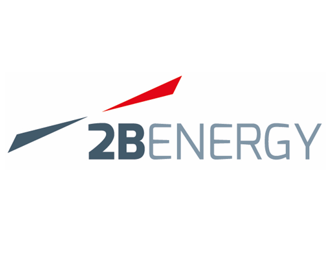
2-B Energy
2-B Energy is a startup specialised in developing wind turbine generators and power plants. It sells a turnkey solution, including the fully-integratd towers and foundation design. 2-B Energy focuses on driving costs down to make offshore wind more sustainable.

Ideol
Ideol is a leading startiup in floating foundations for offshore wind. It contributes to all stages of floating wind projects, from conception to installation. Their core product is their Damping Pool® floating technology.

ONYX InSight
ONYX InSight provides a condition-monitoring and predictive maintenance software in the wind industry. It collects, monitors and analyses data in real time, to predict faults and make tailored maintenance recommendations.
123Fab #27
1 topic, 2 key figures, 3 startups to draw inspiration from
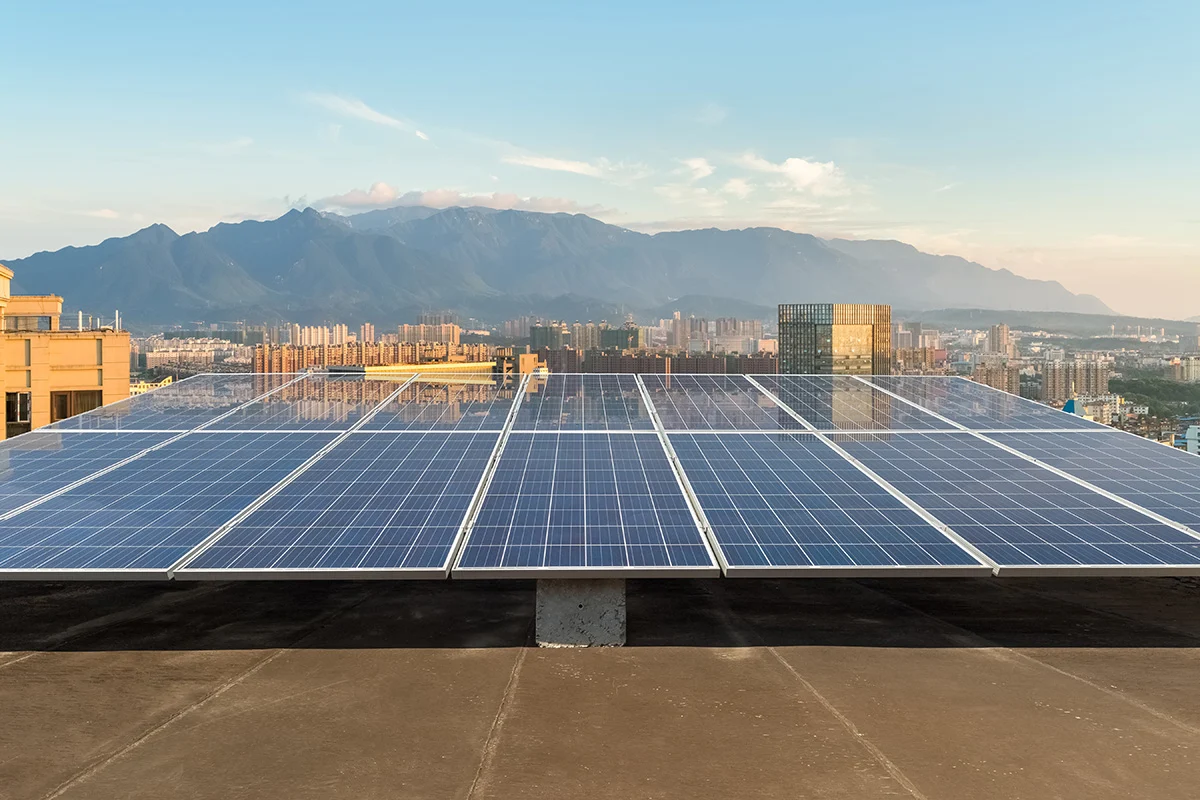
In recent years, the solar photovoltaic (PV) market has gained impetus from the rising demand for alternative sources of energy and the decreasing operating costs. Convinced that solar energy is essential to achieve climate neutrality, the ‘Solar Europe Now’ coalition, which brings together 120+ players across Europe, calls for better integration of solar PV into climate and energy policies. Rooftop PV systems, for instance, are an accessible tool for decarbonizing activities (tertiary or industrial) and can be combined with other energy transition projects (storage, biomass, etc.). And you, do you have any plans in the field of solar energy?
As far as solar energy is concerned, two main technologies are used: photovoltaic (PV) and concentrated solar power (CSP). Unlike CSP, which uses the sun’s energy to convert it into high-temperature heat, PV uses sunlight to convert it into electricity. PV has four main applications: residential, utility-scale, commercial & industrial (C&I) and off-grid.
In this newsletter, we will focus exclusively on utility-scale and C&I applications.
Over the years, solar energy has proven to be more beneficial than before. In addition to being a truly renewable energy that can be harnessed in most parts of the world and will be accessible as long as the sun shines, its applications are multiplying. However, it has also been widely criticized:
- It is weather-dependent – solar panels are dependent on sunlight to effectively collect solar energy. As a result, cloudy and rainy days have a noticeable effect on the energy system.
- Solar storage can be expensive – beyond the initial cost of purchasing solar PV systems, which is fairly high, solar energy also requires large storage systems.
- It uses a lot of space – solar PV is a much more land-intensive technology than coal, natural gas or nuclear power. It uses 44 acres per megawatt compared to 12 for the other three sources. However, it is less than wind and hydro, which use 71 and 315 acres respectively.
- The toxic chemicals used – the PV production process requires the use of cadmium and arsenic. While the EU has implemented strict regulations in place for PV recycling, a large number of countries dump their solar panels in landfills, risking toxic chemicals leaking into the soil.
However, a lot of R&D has been carried out to address these issues in recent years. Startups and corporates have developed new technologies that have reduced the cost of PV systems down and maximized their efficiency. Startup solutions are:
- Creating more efficient materials – startups are integrating new materials into solar panels to maximize the solar PV yield. One example is Australian startup Sapphire, which uses nanostructured ‘black silicon’ to prevent light reflection and allow the cells to absorb more light.
- Developing ways to store more energy – Finnish cleantech startup Teraloop developed an alternative model to electrochemical batteries for storing renewable energy: a flywheel. It is designed to store rotational energy efficiently and meet the requirements of industrial players who need a large amount of energy.
- Producing smarter solar trackers – solar panels are often assembled into arrays on a type of mounting system – rooftop-mounted, ground-mounted, wall-mounted or floating. While mounts can be fixed, they can also be dynamic and use solar trackers to make sure panels always face the sun. These tracking systems are increasingly common in utility-scale projects. In the tracker space, US startup Array Technologies has developed DuraTrack Hz, an industry-leading single-axis tracker. Early October, the startup raised over $1 billion in a public offering.
- Manufacturing more reliable inverters – a large amount of the production loss on solar PV systems is often attributable to the poor performance of inverters, responsible for converting and feeding the power into the grid. This can be due to a faulty installation, overheating issues or an isolation fault. US startup Alencon Systems has developed a system based on a patented harmonic neutralization approach, an upgrade from the pulse-with modulation used by PV inverters today.
Beyond efficiency, startups are also addressing sustainability issues. We have recently seen the development of organic photovoltaic (OPV) cells that use thin-film organic semiconductors – typically polymers or small molecules. The EU has also been investing to develop systemic circular business solutions. This is in particular the object of study of the 2 European-funded programs Circusol and Cabriss.
While the PV sector is predominant, the concentrated solar power (CSP) sector is also gaining traction. Heliogen, a startup backed by Bill Gates, raised $39 million in early November to support industrial applications in which PV may not be able to compete: production of cement, steel and petrochemicals, etc.
To conclude, we anticipate solar energy to grow in prominence in the commercial & industrial sectors in the coming years in the EU. Not only thanks to Germany’s sustained deployment but also to emerging growth markets such as France, the Netherlands and Spain as a result of improving policy environments. Essentially, the future of solar energy will be shaped by incumbent lobbying; the speed, quantity and nature of government support and the divestments and investment made.
2 Key Figures
378 solar PV startups
in the world registered by Crunchbase
Market size expected to reach $113bn by 2025
According to MarketsandMarkets, the global photovoltaic market is expected to grow from $76.6 billion in 2020 to $113.1 billion by 2025, at a CAGR of 8.1%.
3 startups to draw inspiration from
This week, we identified three startups that we can draw inspiration from: Sapphire, SolarEdge technologies and Oxford PV.
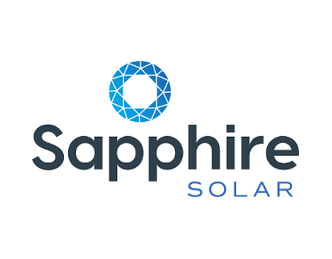
Sapphire
Sapphire designs and manufactures solar energy systems to make them efficient by using nanostructured “black silicon” to prevent light reflection and allow the cells to absorb more light.
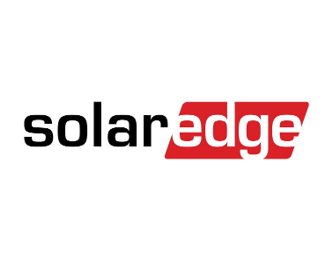
SolarEdge technologies
SolarEdge technologies sells power optimizers, solar inverters and monitoring systems for PV arrays. The products are designed for residential, commercial and utility-scale installations.

Oxford PV
Oxford PV commercializes a new technology for thin-film solar cells using solid-state perovskites, boosting the efficiency of current commercial cells.
123Fab #22
1 topic, 2 key figures, 3 startups to draw inspiration from
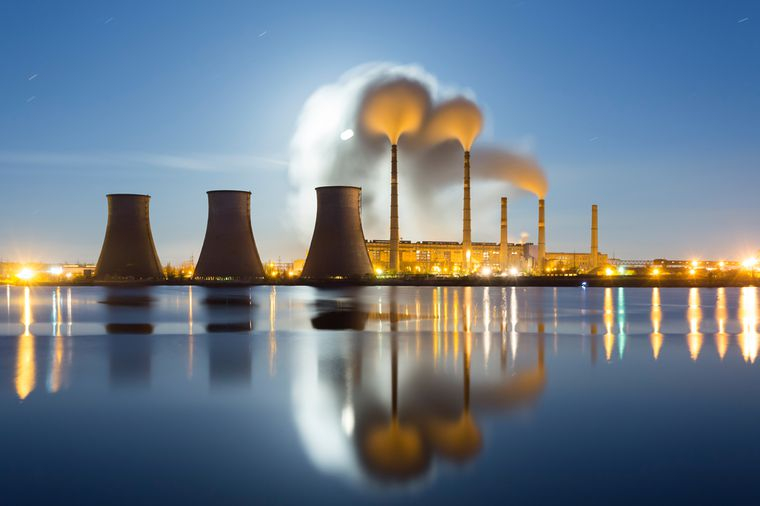
Towards CO2 Capture
”The deployment of carbon capture and storage (CCS) technology is not optional if the world hopes to meet the targets set out in the Paris Climate Agreement”, stated recently the International Energy Agency. Carbon Capture and Storage is a technology that can capture up to 90% of the carbon dioxide (CO2) emissions produced from the use of fossil fuels in electricity generation and industrial processes, preventing the CO2 from entering the atmosphere, or removing the CO2 that already reached the atmosphere. The CCS chain consists of three parts: capture, transport and storage of carbon dioxide emissions. In this newsletter, we will focus on the carbon capture segment exclusively.
There are two types of carbon capture methods: CO2 can either be captured at its source (power plants, industrial processes) and then stored in non-atmospheric reservoirs or it can be removed from the atmosphere (e.g. with forests). Most technologies fall into the first segment. In the context of increasing ecological awareness, interest in carbon sequestration has grown as capture could achieve 14% of the global greenhouse gas emissions reductions needed by 2050.
The main sources of CO2 containment that need to be tackled are the following:
- Natural Gas extraction: 10 to 20% of the CO2 contained in natural gas needs to be extracted before any usage – represents 73% of the industrial CO2 captured
- Hydrogen production: a lot of CO2 is produced during the steam reforming production process – represents 18% of the industrial CO2 captured
- Biogas: up to 50% of CO2 needs to be extracted to have a proper quality after biogas production
Carbon capture technologies separate CO2 from other gases by one of these three methods:
- Pre-combustion capture: it removes CO2 from fossil fuels before combustion is completed, through processes such as gasification (converts carbon-based materials by reaction at high temperature into synthesis gas) or reforming (converts carbon-based materials by reaction with water to produce synthesis gas, hydrogen or carbon monoxide). The Caledonia Clean Energy Project in the UK (due for the mid-2020s) will use gasification to capture more than 90% of the carbon emitted from a natural gas power plant.
- Post-combustion capture: it removes diluted CO2 (~5-15% CO2 concentration) from the flue gases once the fuel has been fully burned within the air. R&D efforts in post-combustion capture are focused on sorbents, membrane systems, and also novel concepts (e.g. hybrid systems that efficiently combine attributes from multiple key technologies). The Petra Nova project in Texas is the largest post-combustion capture solution and removes 92% of the CO2 from the plant.
- Oxy-fuel combustion systems: fossil fuels are combusted in a nearly pure oxygen environment, as opposed to air. The main purpose of using oxy-fuel combustion is to generate flue gas with very high concentrations of CO2 and water vapor, making it possible to separate or capture the CO2 from the flue gas purely by low-temperature dehydration and desulfurization processes. Air Liquide is taking part in several large-scale research projects in Europe and in North America, testing oxy-fuel combustion processes, such as the Lacq Project in the south of France where Air Liquide will supply TOTAL with oxygen at a rate of 240 tonnes per day.
Carbon capture is technically feasible and has existed for 40 years. Nearly two dozen commercial-scale carbon capture projects are operating around the world and 22 more are underway. For instance, since 2017, the ADM Illinois Industrial Carbon Capture & Storage Project has been capturing CO2 from an ethanol production facility and sequestering it in a nearby deep saline formation. The project can capture up to 1.1 million tons of CO2 per year.
Although carbon capture is feasible, there are economic reasons that explain its limited adoption. Most CCS applications are currently not economically viable and there is a lack of government policies to support the technology. Two changes would be required for CCS to become economically viable in those categories. First, the cost of carbon capture must come down, either through the development of new technologies or through scale and experience effects. Second, the value of captured CO2 emissions must increase, through new uses and sources of demand. The carbon tax could accelerate its adoption if it is high enough to be binding (as in Norway) or if there is a post-capture carbon market (as in the US where petrol companies buy carbon to increase their productivity, although this example is not a very eco-friendly approach). In France, on the contrary, the carbon tax is too low compared to the high investments that require carbon capture.
Yet, more and more startups are positioning themselves in this segment and are raising funds. In June 2020, Climeworks, a Swiss climate startup, raised 73 million Swiss francs ($76 million) in a private funding round. It builds machines that capture CO2 from the air and store it in a solid-state underground. It also takes the CO2 and delivers it to industrial clients, such as The Coca-Cola Company, to put bubbles in drinks.
Finally, with regard to its environmental impact, attention should be drawn to the need to use additional fossil fuels for carbon capture solutions. The use of CCS with renewable biomass is one of the few carbon abatement technologies that can be used in a ‘carbon-negative’ mode.
All in all, the carbon capture market has existed for half a decade, but the timing seems right. Plans for more than 30 new integrated CCUS facilities have been announced since 2017 and many startups are addressing this market as well. Furthermore, the trend in CCS investment is on the rise. On September 1st, 2020, the U.S. Department of Energy announced the award of approximately $72 million in federal funding to support the development and advancement of carbon capture technologies.
2 Key Figures
56 Carbon Capture startups
in the world registered by Crunchbase
Market size expected to reach $6.1bn by 2027
The global carbon Capture market size was valued at $1.8bn in 2019 and is expected to reach $6.1bn by 2024.
3 startups to draw inspiration from
This week, we identified three startups that we can draw inspiration from: SeeO2, Climeworks and C-Capture.

SeeO2
See O2 Energy is a Canadian startup working to efficiently convert carbon dioxide and water into marketable and clean value-added products using reversible fuel cell technology. This solution makes it possible to effectively capture and use carbon to produce fuels, power, heat, and oxygen.
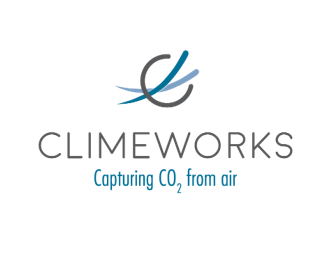
Climeworks
Climeworks is a spin-off company that develops a carbon dioxide reclaiming system. Its product extracts carbon dioxide from ambient air. It builds three models based on the amount of CO2 extracted. Its chief target markets are F&B companies that use CO2 for aeration in food processing and greenhouse owners. It also intends to enable the creation of carbon-neutral synthetic fuels using extracted CO2.

C-Capture
C-Capture, a spin-off from the University of Leeds, developed a bottom-up approach to design solvent systems for the removal of CO2 from gas streams. The patented technology captures CO2 from methane gas streams as it passes through and upgrades biogas. Reversibly captures carbon dioxide from power stations, steel and cement production, and fermentation units.
